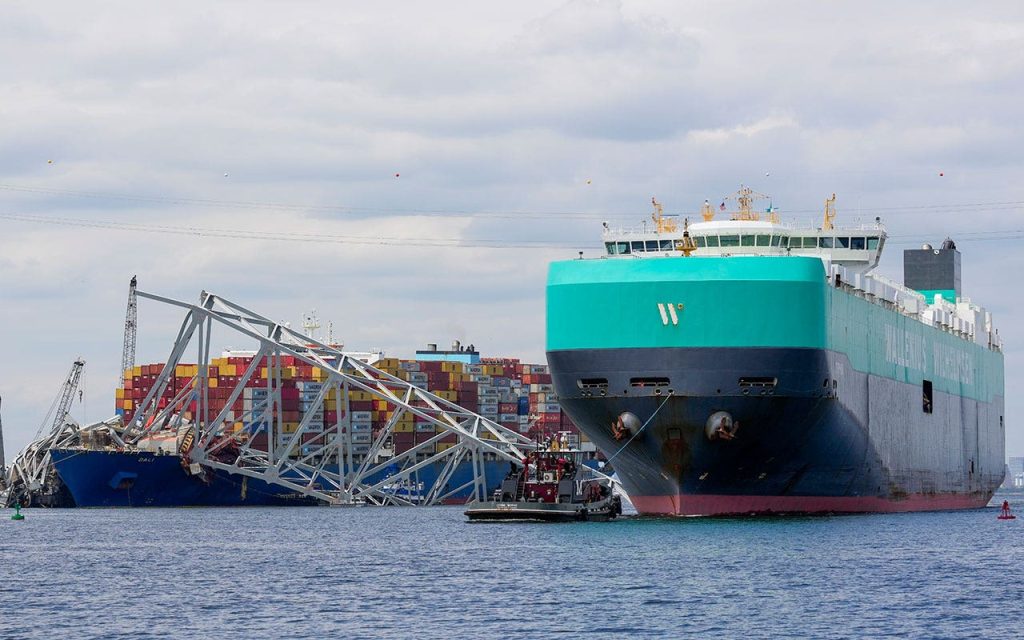A cargo ship recently passed through Baltimore’s new deep-water channel after a four-week halt in maritime traffic due to the collapse of the Francis Scott Key Bridge. The cleanup effort has been ongoing, with thousands of tons of debris cleared to reopen the port, allowing commercial ships to resume their voyages. The first cargo ship that passed through the channel was the Balsa 94 headed to Canada, followed by two more commercial ships. The reopening of the port is a crucial step for the recovery effort after the bridge collapse disrupted the flow of traffic and impacted the jobs of longshoremen, truckers, and small business owners.
Following the collapse of the Francis Scott Key Bridge, five vessels have been stranded in Baltimore, finally able to leave through the new temporary channel. Thousands of workers and businesses have been impacted by the closure of the port, prompting local and state officials to prioritize reopening the port and restoring normal traffic to mitigate the economic implications of the collapse. Assistance programs have been established for unemployed workers and those affected by the closure. The reopening of the port is expected to bring relief to those whose livelihoods have been affected by the halt in maritime traffic.
The Balsa 94, guided by tug boats, successfully navigated through the channel past the fallen bridge and grounded Dali, the container ship that caused the collapse. This major step in the cleanup effort signifies progress in clearing the main channel of obstructions to allow larger cargo and cruise ships to pass through. The Dali, which lost power and veered off course, will be removed from the collapse site to allow for the reopening of the port’s main channel with a controlling depth of 50 feet after a brief closure.
A memorial near the bridge site honors the six roadwork crew members who lost their lives in the collapse. The memorial has evolved to include large crosses decorated with the victims’ national flags and other personal items, serving as a tribute to those who perished. Crews are working tirelessly to recover the missing bodies and clear the debris from the collapsed bridge. The legal implications surrounding the bridge collapse remain pending as investigations by the FBI and the National Transportation Safety Board are ongoing to determine the cause of the incident.
The reopening of the port and the gradual return to normalcy are crucial for the local economy, which heavily relies on maritime traffic through Baltimore’s port. The lifting of the closure will allow for the resumption of traffic flow and the revitalization of businesses and jobs impacted by the bridge collapse. The temporary channel established to accommodate commercial ships is a significant step towards restoring stability and economic activity in the region. City officials are advocating for accountability and full liability from the ship’s owner and manager for the bridge collapse as investigations seek to uncover the root cause of the tragedy.
As the cleanup effort continues, crews are working diligently to remove steel spans from the deck of the Dali and refloat the ship to guide it back into the port. The reopening of the port’s main channel is a priority, allowing for the passage of larger vessels through the harbor. With ongoing investigations and legal proceedings, the process of recovery and restoration following the bridge collapse in Baltimore is a multifaceted operation involving multiple agencies and stakeholders working towards a common goal of rebuilding and returning normalcy to the port and the affected community.


